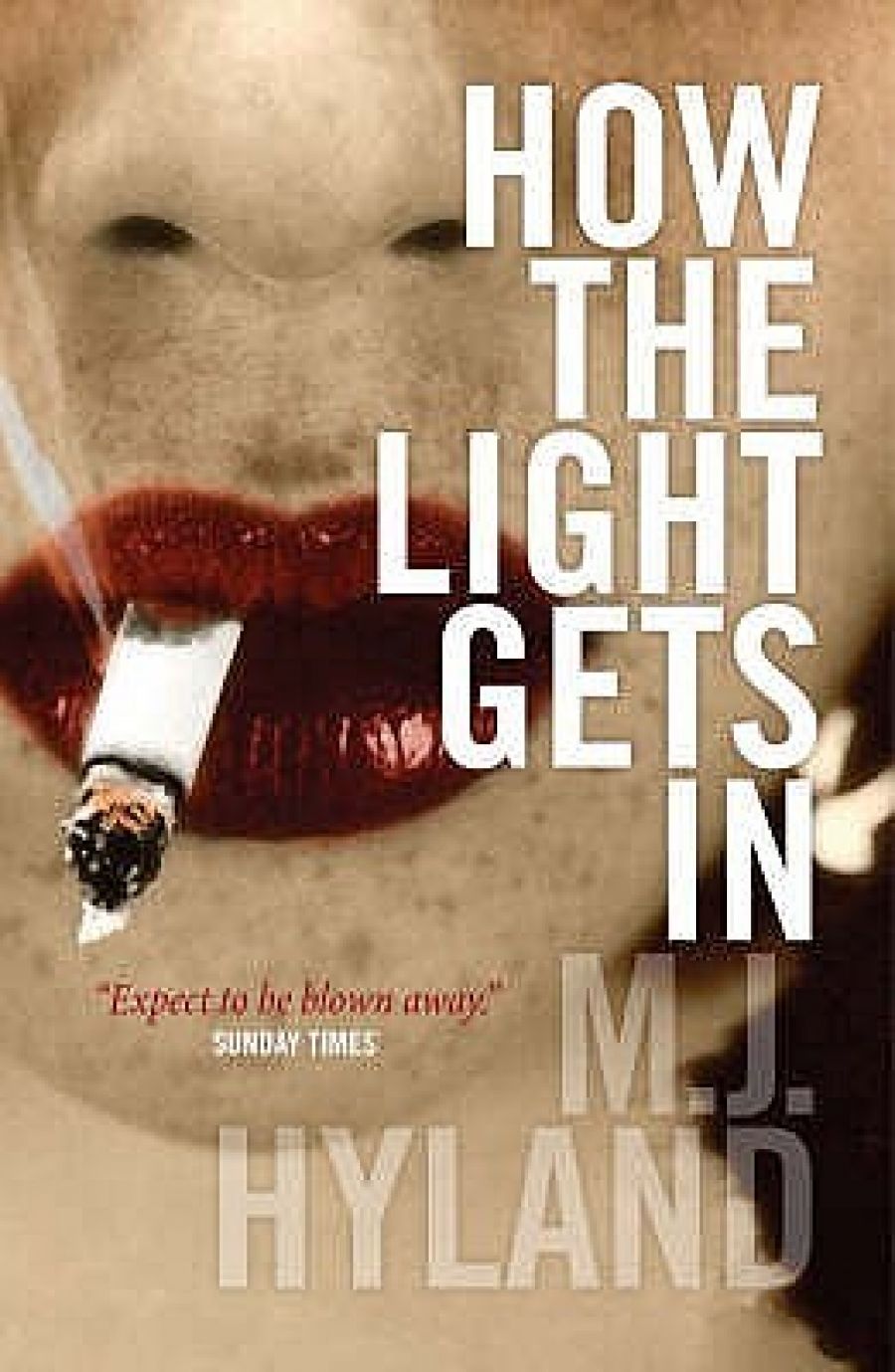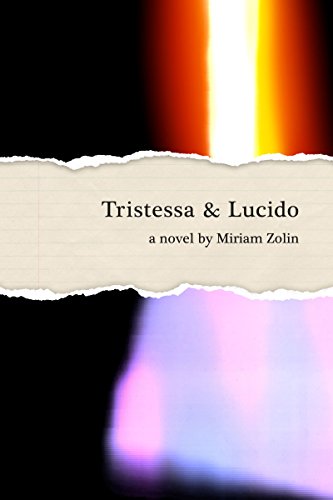
- Free Article: No
- Contents Category: Fiction
- Review Article: Yes
- Custom Highlight Text:
One of Frank Moorhouse’s stories in his collection The Americans, Baby (1972) vividly describes two people’s tentative steps across a divide. It is a sexual overture, but also one that defies the constraints of national stereotypes. Carl, an Australian university student, bristles at an American man’s advances. Uneasy about his new sexual identity, he is unable to shake the sense that he is consorting with the enemy, at a time of mass protests against the Vietnam War. At the story’s end, the two men lie together in bed holding hands. The American urges his Australian lover to wipe his tears, then comments obliquely: ‘I guess this is the way it is with us.’
- Book 1 Title: How the Light Gets In
- Book 1 Biblio: Penguin, $22.95 pb, 317 pp
- Book 2 Title: Tristessa And Lucido
- Book 2 Biblio: UQP, $22 pb, 267 pp
- Book 2 Cover Small (400 x 600):

- Book 2 Cover (800 x 1200):

- Book 2 Cover Path (no longer required): images/1_Meta/April_2020/41f7H1zANoL.jpg
These two new novels, by first-time writers, describe the experiences of two very different Australian women in the United States. Interestingly, at a time of anti-American witch-hunts, neither considers the cross-cultural dimensions of the experience. Possibly, this reflects a greater national self-confidence. For these writers, the choice of the United States as the locale has little real significance apart from allowing an exegesis of internal psychological processes.
M.J. Hyland’s novel How the Light Gets In has attracted attention because of its forthcoming publication by the Scottish publisher Canongate, but also because the author’s life resembles that of the novel’s central character, Lou. Like Lou, who is aged sixteen, Hyland was expelled from a student exchange program in the United States for under-age drinking. Even while emphasising the differences between herself and Lou, Hyland told the Sydney Morning Herald that she was just a ‘regular teenager’ who drank, but ‘Suddenly I was in Idaho and I couldn’t drink, smoke or hitch-hike.’
On arrival in Chicago, Lou Connor leaves behind her life in a depressed Sydney housing commission flat alongside a family she barely tolerates. Coming to the Midwest, Lou feels that she has a chance to be reborn in a sea of possibilities. The reality, of course, is more complicated. Her host family, though well-intentioned, is at a loss to deal with Lou’s increasingly self-destructive behavior. Lou ends up in an institution for wayward exchange students, where she meets a Russian teenager who becomes her first love.
That Hyland is a talented writer is clear from the novel’s first page. On a plane, a nervous Lou watches a Christian panel talk about a recent execution in Texas:
‘He was a Christian,’ says a woman holding a crucifix. ‘For his last meal he requested a banana, a peach and a salad with either ranch or Italian dressing,’ says a man with a beard. ‘He should rot in hell,’ says another. I lift the foil from the white plastic dish on my tray, but I cannot eat.
Hyland evokes not only the strange reality of the New World in which Lou finds herself, but also the girl’s awkward response, something that becomes apparent when she tries to make small talk with an old woman sitting beside her.
Most striking in the novel is the way Hyland conjures the confused state of mind of a highly intelligent, if self-obsessed, teenager who struggles to understand how others perceive her. As a result, there’s little description of the world Lou finds herself in, aside from brief references to shopping malls, her host family’s plush home and the high school she attends.
Few Australian novels have considered the complicated reality of an individual moving out of their social class (or race-defined group). Arguably, Hyland has missed an opportunity in making Lou’s psychology the focus of the novel rather than broader social issues, or in determining that she had to go to the United States to fulfil her potential.
None of this is to disparage Hyland’s achievement. How the Light Gets In is a confident début and deserves a large readership. In its portrayal of teenage self-delusion and suffering, it has no real competition.
Where Hyland’s writing is cool and precise, Miriam Zolin’s Tristessa and Lucido is a highly emotional description of thirty-something Theney and her life in Prospect, Nebraska. Theney has relocated to the United States to work for a computer company, but spends most of her time in a remote, snow-covered town, frequenting a bar and falling for a badly bruised jazz musician called Aubery.
The book runs in parallel stories; at first, the action takes place in Nebraska and rural Australia, then later in Melbourne. Finally, in a quasi-New Age fable – the Tristessa and Lucido of the title – Theney writes as a way of expressing love for a man who eludes her.
Whether or not this approach is entirely successful is a matter for debate, but something about Zolin’s novel will remain with the reader. It is heartfelt, and this air of sincerity gives the relatively familiar terrain of love lost and won a certain resonance.
References to angels and to Theney’s magical power to heal others will not be to everyone’s taste – ditto the dependence on the second person in the narrative (which ensures that Theney’s idiosyncratic actions and responses become symptomatic of a broader human condition), but Zolin’s writing, at its best, has the ability to move and surprise.
Tristessa and Lucido is also about friendship, particularly a relationship between Theney and the capricious man-magnet called the Princess. This American woman is everything that Theney thinks that she isn’t: attractive, free of anxiety and comfortable in her own skin.
Zolin does make a comparison between Australia and the United States. When Theney is at her favourite bar, warmed by a few glasses of shiraz, a man starts to chat her up. He asks her what she thinks of American men. Before Theney can finish answering, a group of perfect American women enter the bar, distracting the man: ‘like strings of home-made toffee, the threads … stretch until they are too thin to support themselves’:
You have lost him to their perfect hair, their American teeth, their dependable safeness of their polished, sharpened nails and the layer of make-up on their perfect desirable faces.
Then, in a sentence that succinctly merges ideas of shared cultural experience between the two cultures, Zolin says that the American women sound ‘like a flock of cockatoos, screeching as they fly into the valley to roost the night on the tall gum trees down by the creek of your childhood’.


Comments powered by CComment